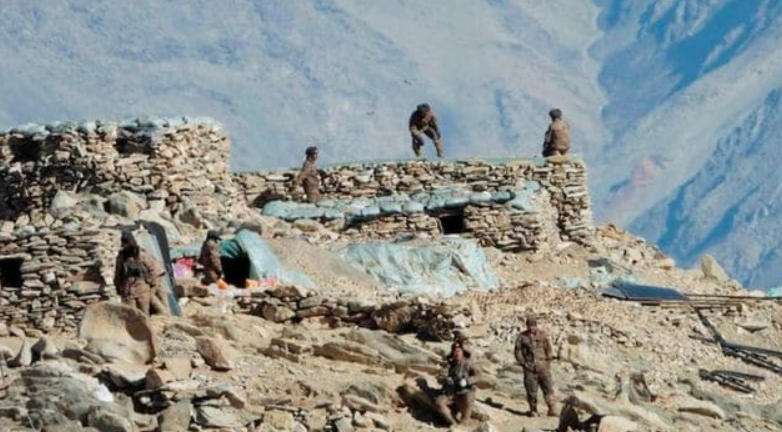Table of Contents
”UPSC News Diary Today” is every day published in the evening between 6-7 PM and contains all current affairs articles from the day on a single platform. ”UPSC News Diary Today” covers various topics from UPSC Syllabus and is very helpful and time managing for UPSC Aspirants. The framing of this daily current affairs compilation article is easy to read and understandable also.
In the ”UPSC News Diary Today” article, we focus on both UPSC Preliminary and Mains exam-oriented current affairs & prepare a gist of daily important news articles from leading National Newspapers, PIB, and other various official sources.
Vande Bharat 2
Vande Bharat 2: Why in news?
Indian Railways will be introducing the new avatar of high-speed train Vande Bharat namely Vande Bharat 2.
Vande Bharat 2: Key Features
- Vande Bharat 2 will be equipped with more advancements and improved features like 0 to 100 Kmpl speed in just 52 seconds, maximum speed up to 180 Kmph, lesser weight of 392 tons instead of 430 tons, and WI-FI content on demand.
- New Vande Bharat will also have 32-inch LCD TVs which were 24 inch in earlier versions.
- 15 percent more energy efficient ACs with dust-free clean air cooling of the traction motor will make the travel more comfortable.
- Side recliner seat facility which is being provided to Executive Class passengers will now be made available for all classes.
- In the new design of Vande Bharat Express, photo-catalytic ultraviolet air purification system is installed in the roof-mounted Roof Mounted Package Unit for air purification.
EBP (Ethanol Blending Programme)
EBP: Why in news?
- The export policy of broken rice amended in order to ensure adequate availability of broken rice for consumption by domestic poultry industry and for other animal feedstock and to produce ethanol for successful implementation of EBP (Ethanol Blending Programme).
EBP: What is it?
- Ethanol is an agro-based product, mainly produced from a by-product of the sugar industry, namely molasses.
- In years of surplus production of sugarcane, when prices are depressed, the sugar industry is unable to make timely payment of cane price to farmers. T
- he Ethanol Blending Programme (EBP) seeks to achieve blending of Ethanol with motor sprit with a view to reducing pollution, conserve foreign exchange and increase value addition in the sugar industry enabling them to clear cane price arrears of farmers.
- The Central Government has scaled up blending targets from 5% to 10% under the Ethanol Blending Programme (EBP).
Gogra-Hotsprings
Gogra-Hotsprings : Why in news?
India, China troops begin disengagement from Gogra-Hotsprings in Ladakh.
Gogra-Hotsprings : Key Points
- After Chinese troops’ incursion in eastern Ladakh in 2020, Patrolling Point 15 (PP15) in Hot Springs and PP17A near Gogra Post were among the four friction points between the two armies, the other two being PP14 in Galwan Valley and the north bank of Pangong Tso.
- The disengagement from Gogra-Hotsprings area comes a week before the annual summit of the Shanghai Cooperation Organisation (SCO) in Uzbekistan.
Significance of disengagement from Gogra-Hotsprings
- The regions, PP15 and PP17A, are located in an area where India and China largely agree on the LAC alignment.
- After the 2020 ingress, there was a significant build-up of the Chinese troops and deployment of heavy weapons in Hotsprings-Gogra region
India-Japan 2+2 Ministerial Dialogue
India-Japan 2+2 Ministerial Dialogue- Relevance for UPSC Exam
- GS Paper 2: International Relations- Bilateral, regional and global groupings and agreements involving India and/or affecting India’s interests.
India-Japan 2+2 Ministerial Dialogue in News
- Recently, Raksha Mantri Shri Rajnath Singh participated in the India-Japan 2+2 Ministerial Dialogue in Tokyo.
- India-Japan 2+2 Ministerial meeting was the first 2+2 ministerial meeting after the inaugural dialogue was set up in 2019.
India-Japan 2+2 Ministerial Dialogue
- Background: The first India-Japan talks in the 2+2 format were held between India and Japan in November 2019 in New Delhi.
- About: India-Japan 2+2 Ministerial Dialogue is a format of meeting of the foreign and defence ministers of India and Japan on strategic and security issues.
- Objective: India-Japan 2+2 Ministerial meeting is aimed at creating a mechanism under which the bilateral relationship takes a decisive strategic turn with greater integration of defence, security and intelligence apparatus.
What is 2+2 Ministerial Dialogue?
- About: The 2+2 dialogue is a format of meeting of the foreign and defence ministers of India and its allies on strategic and security issues.
- Importance: A 2+2 ministerial dialogue enables the partners to better understand and appreciate each other’s strategic concerns and sensitivities taking into account political factors on both sides.
- This results in a stronger, more integrated strategic relationship in a rapidly changing global environment.
- Partner Countries: India has 2+2 dialogues with four key strategic partners: the US, Australia, Japan, and Russia.
- Besides Russia, the other three countries are also India’s partners in the Quad.
India-Japan 2+2 Ministerial Dialogue-Joint Statement
- Rules-based global order: Ministers reaffirmed their commitment to a rules-based global order that respects sovereignty and territorial integrity of nations.
- They emphasized the need for all countries to seek peaceful resolution of disputes in accordance with international law without resorting to threat or use of force or any attempt to unilaterally change the status quo.
- Free and open Indo-Pacific: The Ministers highlighted their commitment to a common strategic goal of achieving a free and open Indo-Pacific, that is inclusive and resilient,based on the rule of law and free from coercion.
- Support for ASEAN Outlook on the Indo-Pacific (AOIP): Ministers also reiterated their strong support for ASEAN’s unity and centrality and their full support for the “ASEAN Outlook on the Indo-Pacific (AOIP)”.
- AOIP upholds the principles such as the rule of law, openness, freedom, transparency and inclusiveness.
- Defence cooperation: Acknowledging Japan’s determination to reinforce its defence capabilities, Indian side expressed its supportto work towards enhanced security and defence cooperation.
- The Ministers welcomed the participation of Japan for the first time in the multilateral exercise MILAN.
- The Ministers expressed their commitment to continuing bilateral and multilateral exercises including “Dharma Guardian”, JIMEX and “Malabar.”
- The Ministers concurred to launch the Joint Service Staff Talks between the Japan Joint Staff and the Indian Integrated Defence Staff.
- The Ministers also committed to seek deeper cooperation on HA/DR and response to infectious diseases and pandemics.
Conclusion
- The Ministers welcomed that the 2+2 meetings, through intensive discussions, have provided a strategic guidance for enhancing the India-Japan Special Strategic and Global Partnership, and decided to hold the next 2+2 Ministerial Meeting in India.
Strategic partnership between India and Japan
Analysis Of Sansad TV Discussion: ”Fourth Round Of India-US 2+2 Dialogue”
Swachh Vayu Diwas
Swachh Vayu Diwas- Relevance for UPSC Exam
- GS Paper 3: Environment- Conservation, environmental pollution and degradation.
Swachh Vayu Diwas in News
- Recently, Union Ministry of Environment, Forest and Climate Change organized 3rd International Day of Clean Air for blue skies as ‘Swachh Vayu Diwas (“Swachh Vayu Neel Gagan”).
Swachh Vayu Diwas
- About: ‘Swachh Vayu Diwas (“Swachh Vayu Neel Gagan”) aims to raise awareness and facilitate actions to improve air quality under National Clean Air Programme (NCAP).
- Key Guidelines: During the event on Swachh Vayu Diwas, MoEFCC has released the following:
- Guidelines on Capacity Building and Outreach programmes to be conducted at National, State and City level, help in mobilising stakeholders at all levels to promote actions to improve air quality.
- Guidelines for release and utilization of funds under NCAP;
- XV Finance Commission Operational guidelines for implementation of recommendations for air quality component
- Best Practices and success stories of 8 cities under NCAP. These best practices help in adopting sustainable approaches by other cities for improvement of air quality.
International Day of Clean Air for blue skies 2022
- About: United Nations General Assembly has designated 7th September as the “International Day of Clean Air for blue skies” with an aim to raise awareness and to promote actions to improve air quality.
- Theme: International Day of Clean Air for blue skies 2022 theme is “The Air We Share”.
- Mandate: International Day of Clean Air for blue skies 2022 aims to raises awareness on the urgency of strengthening national action and regional collaboration to improve air quality.
Previous International Day of Clean Air for blue skies
- First ‘International Day of Clean Air For Blue Skies’: The first event, with the theme “Clean Air for All,” was held on September 7, 2020.
- Second ‘International Day of Clean Air For Blue Skies’: The 2021 theme for the International Day of Clean Air for blue skies is “Healthy Air, Healthy Planet” which emphasizes the health aspects of air pollution, especially considering the COVID-19 pandemic.
National Clean Air Programme (NCAP)
- About: National Clean Air Mission program (NCAP) was launched in 2019 to ensure Clean Air for All, healthy and productive life for citizens, and improve air quality in more than 100 cities through holistic approach.
- Key Features: National Clean Air Programme aims at improving air quality by reducing Particulate Matter concentrations by 20-30% in 131 cities in the country. It includes-
- 123 Non-Attainment Cities (NAC) which exceed the National Ambient Air Quality Standards (NAAQS) for 5 consecutive years and
- 42 Million Plus Population Cities/Urban Agglomerations.
- 34 cities are common in both categories.
- Monitoring: Reporting and monitoring of physical and financial progress of action plans is done through PRANA portal (Portal for Regulation of Air Pollution in Non-attainment Cities).
- Key Achievements: 131 cities of the country have developed City Action Plans and Micro Action Plans to address various sources contributing to poor air quality such as vehicles, road dust, construction, industries, thermal power plants, burning of waste, Construction and Demolition Waste, etc.
- There has been an overall improvement in Particulate Matter concentration in 95 cities including 20 cities conforming to the National Ambient Air Quality Standards in the year 2021-22 compared to 2017.
Tackling Air Pollution in Delhi: CAQM Policy to Tackle Air Pollution in Delhi





 TSPSC Group 1 Question Paper 2024, Downl...
TSPSC Group 1 Question Paper 2024, Downl...
 TSPSC Group 1 Answer key 2024 Out, Downl...
TSPSC Group 1 Answer key 2024 Out, Downl...
 UPSC Prelims 2024 Question Paper, Downlo...
UPSC Prelims 2024 Question Paper, Downlo...
